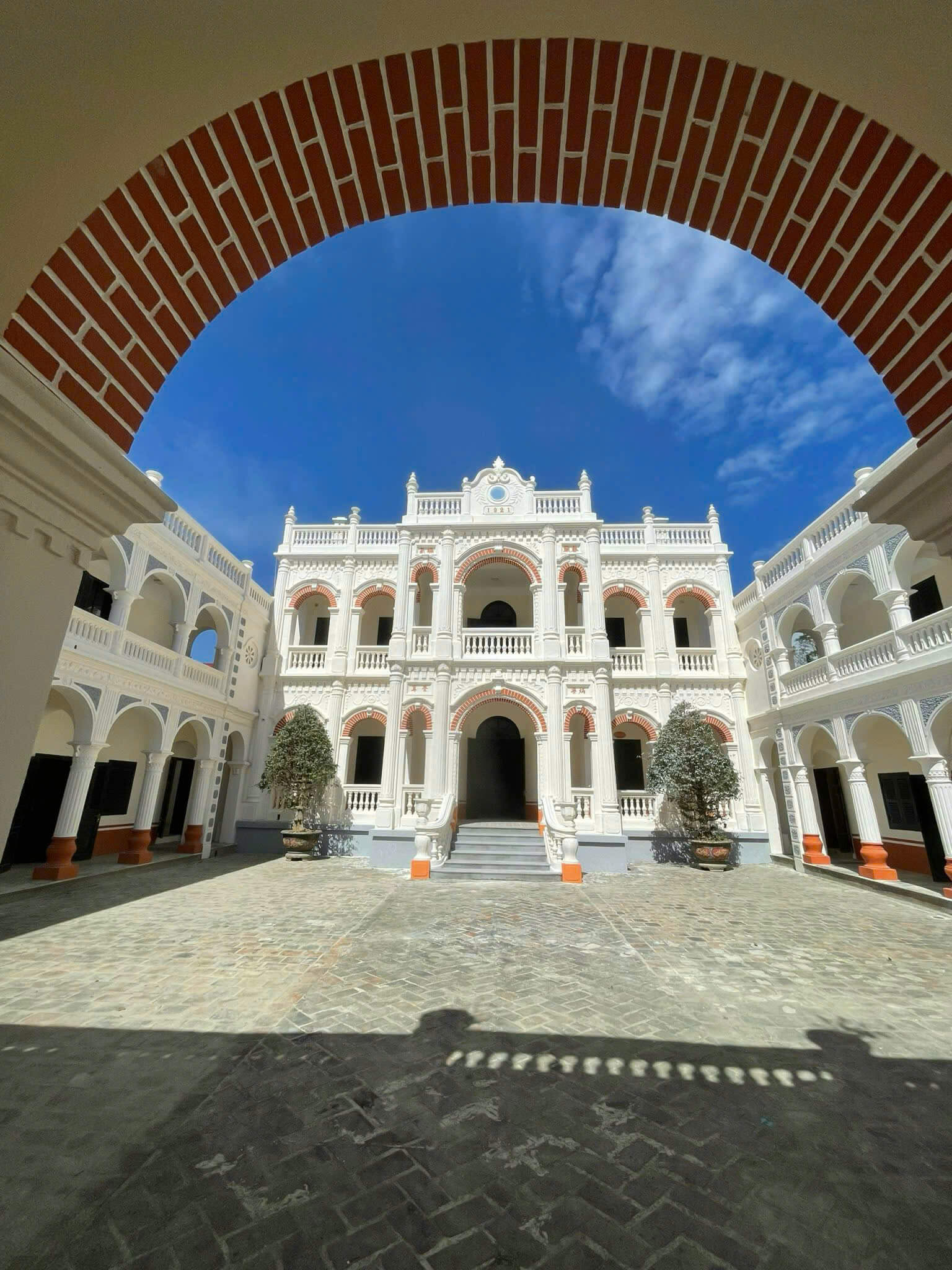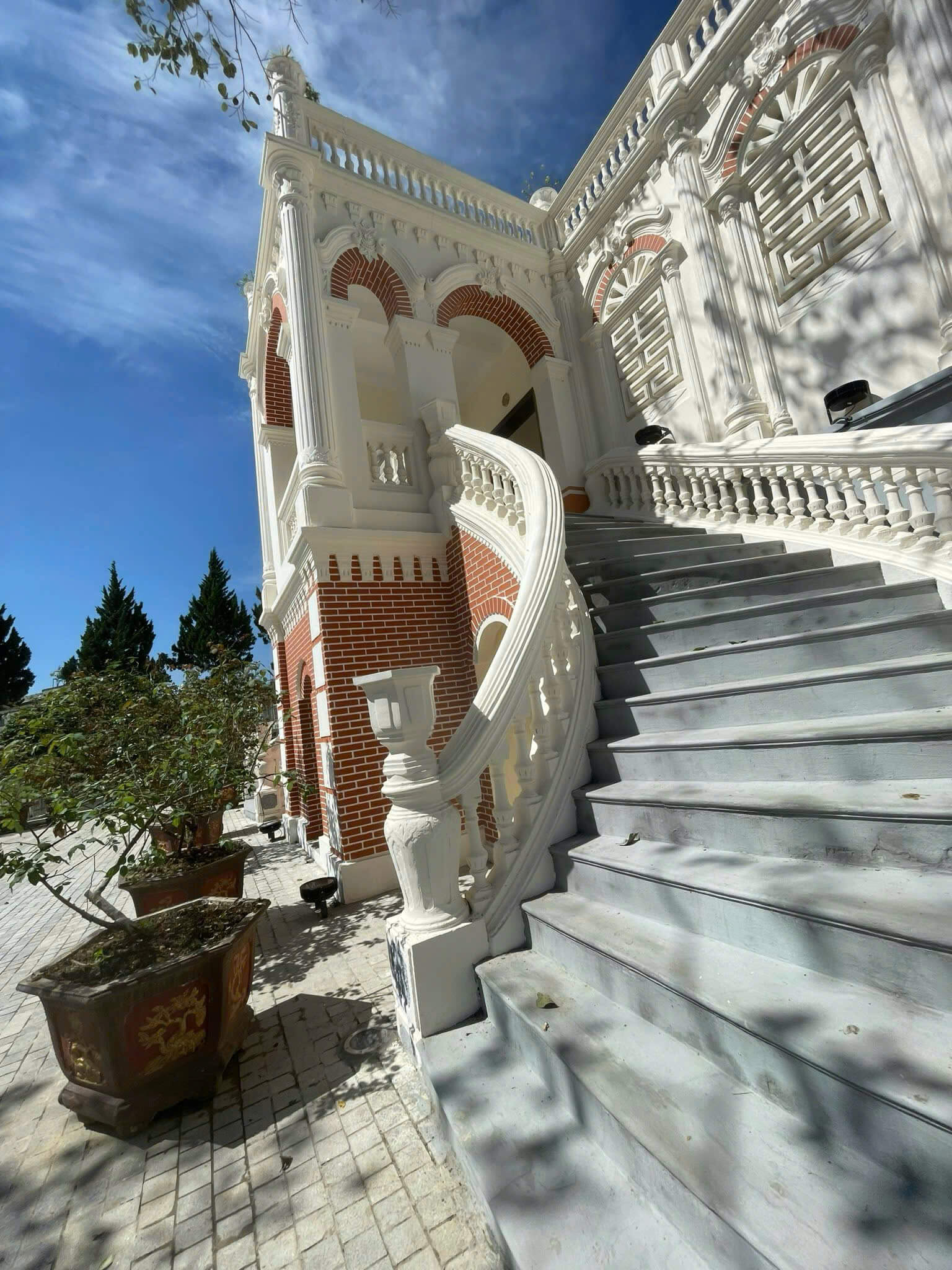- You are here:
- Home »
- Tours & Activities »
- The beauty of Hoang A Tuong Palace after restoration
The beauty of Hoang A Tuong Palace after restoration
Hoang A Tuong Palace, located in Bac Ha District in Vietnam’s northern Lao Cai Province, is a historical site that holds a fascinating blend of ethnic heritage and architectural grandeur.
Built in the early 20th century, the palace served as the residence of Hoang A Tuong, the leader of the local Tay ethnic group and a powerful feudal lord during the French colonial era.
His reign lasted from the 1910s to the 1950s, and the palace was a symbol of both his authority and the French’s indirect control over the region.
The palace’s construction began in 1914 and was completed in 1921.
It was designed by French architects to reflect both the colonial style and the local cultural influences, creating an impressive hybrid structure.
The design combined European and Chinese architecture with traditional Vietnamese and ethnic minority features, reflecting the power dynamics of the time.

The palace was built using local materials, with bricks from Hanoi and timber sourced from the nearby forests, giving it both a foreign and local essence.
The Hoang A Tuong Palace consists of several buildings, with the main house being a large, two-story structure situated on a raised platform.
The architecture is a unique blend of Western styles such as neoclassical, combined with the traditional elements of the Tay and Mong ethnic groups.
Large wooden doors and windows, intricate carvings, and tile roofing are key features of the building’s design.
Surrounding the main structure is a wide courtyard, with a garden that still retains remnants of the grandeur of the past.
Hoang A Tuong, known for his wealth and influence, ruled over the Tay people and had a large personal army.

During the French colonial period, he maintained control over Bac Ha District, acting as an intermediary between the local ethnic groups and the colonial rulers.
However, with the rise of nationalist movements in Vietnam and the eventual defeat of the French, Hoang A Tuong’s power waned.
After the country’s reunification in 1975, the palace was abandoned and fell into neglect, slowly deteriorating over the decades.
The Restoration and Repainting of Hoang A Tuong Palace
In recent years, the Hoang A Tuong Palace has undergone significant restoration and repainting efforts to preserve its historical and cultural importance.
The restoration work began in earnest around 2023, with a focus on returning the palace to its former glory while retaining its historical authenticity.
The restoration project involved local artisans and experts in historical preservation, who worked diligently to carefully restore the structure to its original form.
The repainting of the palace was a key aspect of the restoration, as the original colors had faded over time, and the walls had suffered from weathering and neglect.
The new paintwork sought to revive the grandeur of the building while ensuring that it remained true to its original design.

Experts used traditional paints and techniques, making sure the palace retained the unique blend of local and Western influences that were part of its identity.
One of the standout features of the repainted Hoang A Tuong Palace is the bright, vibrant color scheme.
The walls, once dull and worn, now shine in hues of white and red, bringing out the intricate details of the architecture.
The ornate carvings, especially on the wooden doors and window frames, have been restored and are now clearly visible, showcasing the detailed craftsmanship that went into the palace’s construction.

The lush greenery surrounding the palace, which includes traditional Vietnamese plants and flowers, adds a refreshing touch to the regal atmosphere.
The restoration of the palace not only highlights its architectural beauty but also revives the cultural significance of the region.
Hoang A Tuong Palace has become a major tourist attraction in Bac Ha, drawing visitors from all over Vietnam and abroad.
The palace offers a glimpse into the past, showcasing the fusion of Western colonial influence with the unique cultural heritage of the ethnic minorities of northern Vietnam.
The repainting has also allowed the palace to serve as a cultural and educational center, where visitors can learn about the history of the region, the role of Hoang A Tuong, and the traditions of the Tay people.
In addition to being a historical landmark, the palace stands as a symbol of the resilience of the local community and the efforts made to preserve and celebrate their heritage.

Conclusion
Today, Hoang A Tuong Palace stands as a testament to both the historical complexity of Vietnam’s northern highlands and the architectural splendor of a bygone era.
The restoration and repainting have given the palace a new lease on life, allowing future generations to appreciate its historical significance and beauty.
For those who visit Bac Ha, the palace remains a must-see landmark, offering a vivid snapshot of Vietnam’s colonial past and the rich cultural fabric of the ethnic communities in the region.
Thanh Tuan
About the Author Sapa Tourism Office
Popular posts

